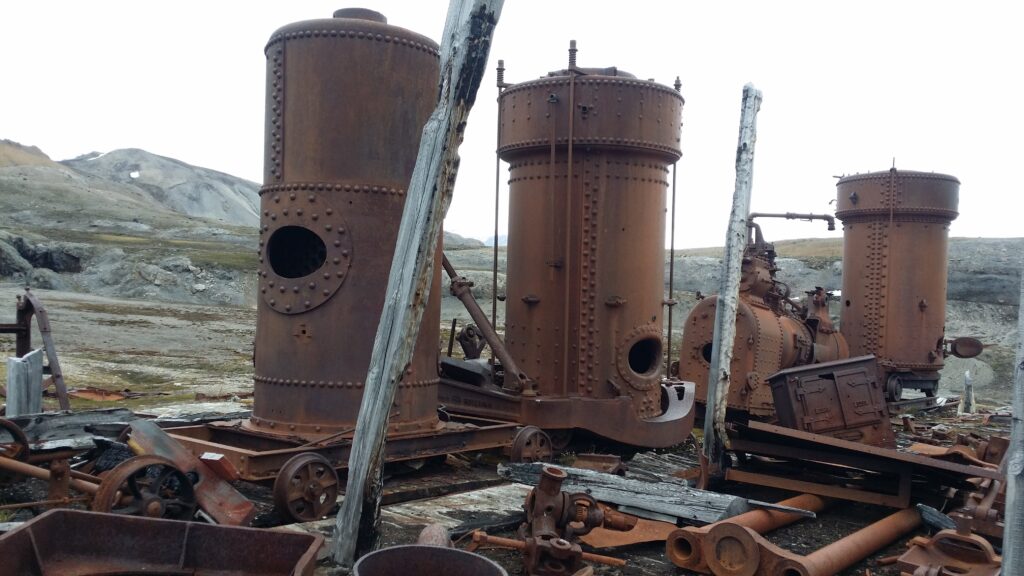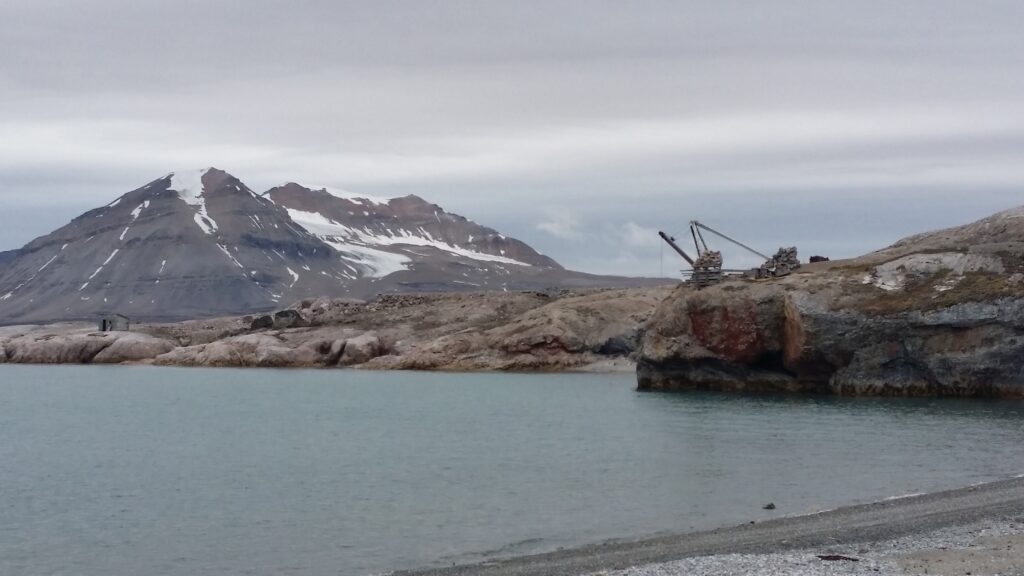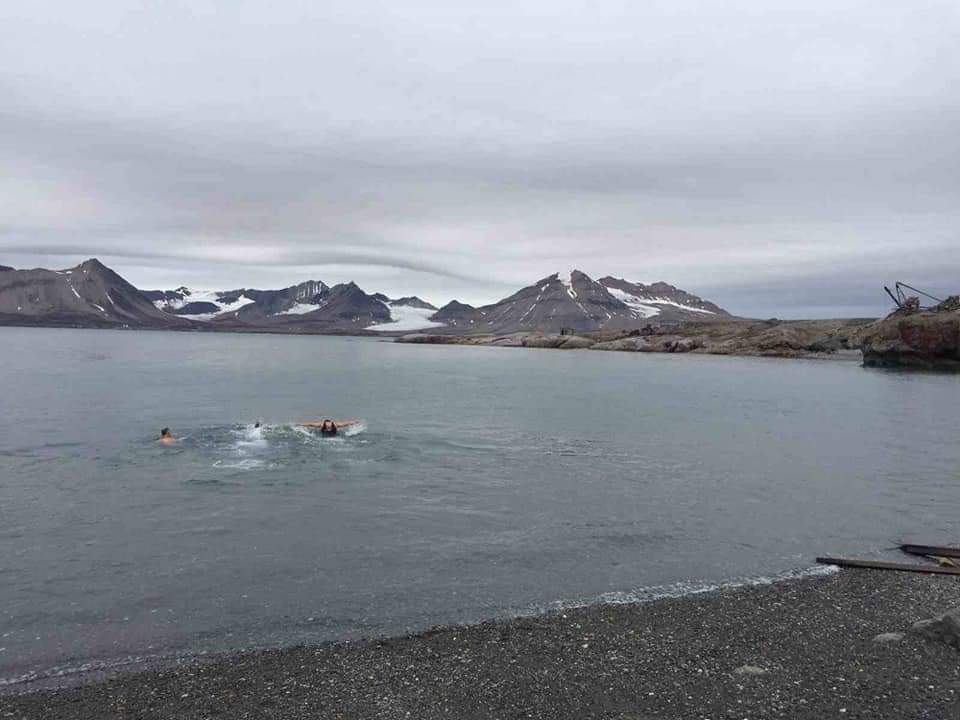The Kings Bay (Kongsfjord) in the northwestern part of Spitsbergen is one of the most beautiful fjords in Svalbard. On the south side of the fjord you will find the researcher town Ny-Ålesund with the previous coal producing ‘Kings Bay Kull Company’, and on the north side you find ‘Ny-London’, a disused marble mining village.

The marble deposits on Blomstrandøya were discovered in 1906. Development of the site began in 1911 and was carried out by the English company ‘Northern Exploration Company Ltd’. The head of the project was Ernest Mansfield. Of the buildings that were erected here (they were supposed to house 70 men), some have been moved to Ny-Ålesund where they are still in use. But some houses remain, partly deserted and partly in use as cabins for the researchers in Ny-Ålesund.

The appetite for investments in the early 20th century was sky high. The best of the technical devices of the time were installed, including railways, steam engines, marble cutting machines and cranes.


The appetite for investments was continuously increasing throughout the First World War, and the share capital rose to over a million pounds. There were many people who made good money during WWI, and they needed something to spend their money on. The adventure in New London ended in the world’s first stock market bubble, which burst in 1920. Large amounts of money had been invested – without anybody knowing what the marble was actually worth.

When the first small cargo of marble arrived in England, 1912, it turned out that the large, beautiful marble blocks had been transformed into marble gravel due to frost bursting. There was no value whatsoever in the marble from Kongsfjorden. However, this did not stop the investments! Expectations of quick returns overshadowed common sense. Mansfield was fired, and the growth continued. The value was NOK 18 million in 1919. The following year it was 0, and the plant was abandoned.
After so much history teaching, time was just right for a bath, and in New London the bathing conditions are chilly, but excellent!

Here we found just the perfect type of sand, and not too shallow, either.

If we swam far? No, we did not swim across Kongsfjorden.